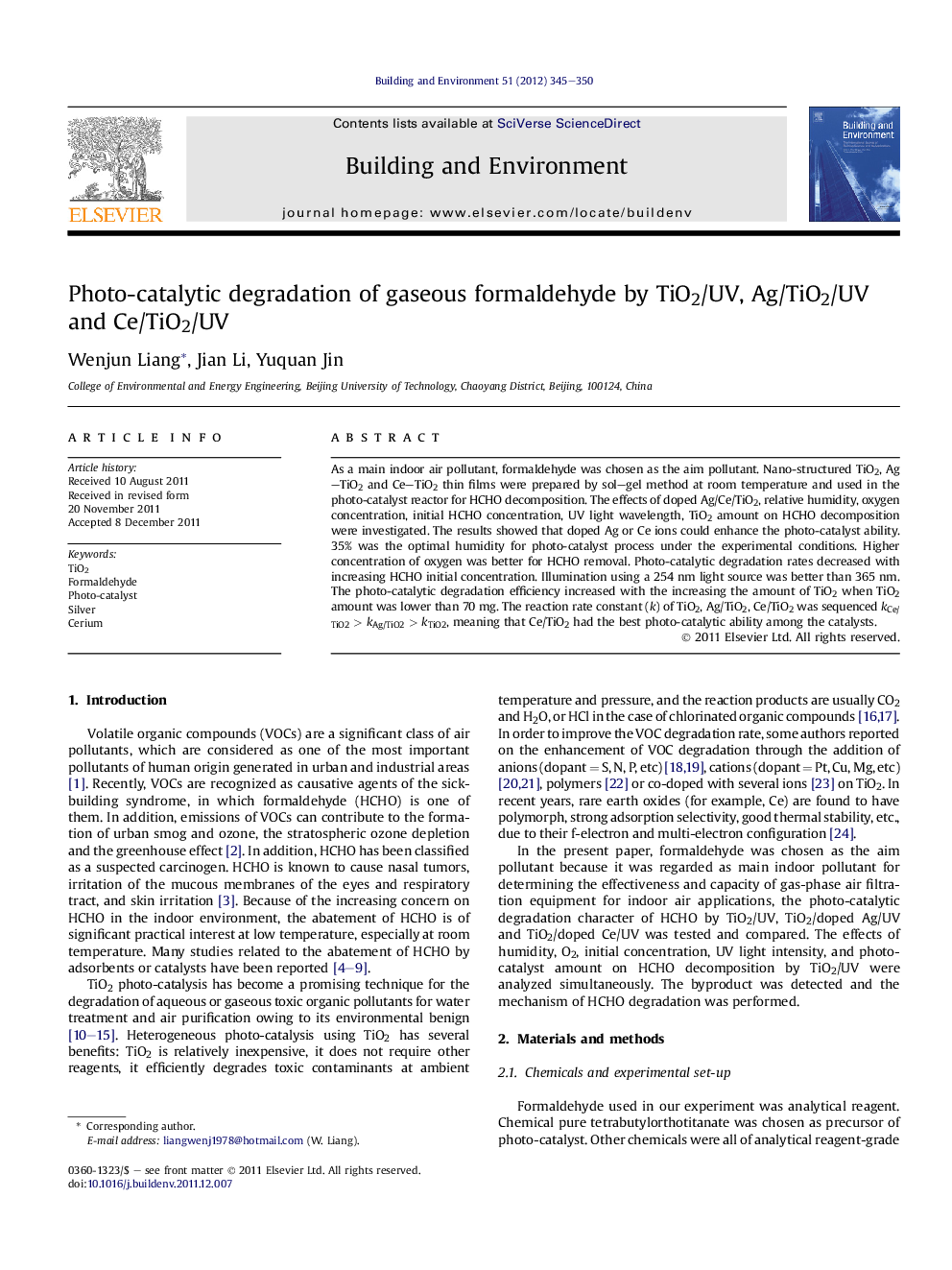| Article ID | Journal | Published Year | Pages | File Type |
|---|---|---|---|---|
| 248488 | Building and Environment | 2012 | 6 Pages |
As a main indoor air pollutant, formaldehyde was chosen as the aim pollutant. Nano-structured TiO2, Ag–TiO2 and Ce–TiO2 thin films were prepared by sol–gel method at room temperature and used in the photo-catalyst reactor for HCHO decomposition. The effects of doped Ag/Ce/TiO2, relative humidity, oxygen concentration, initial HCHO concentration, UV light wavelength, TiO2 amount on HCHO decomposition were investigated. The results showed that doped Ag or Ce ions could enhance the photo-catalyst ability. 35% was the optimal humidity for photo-catalyst process under the experimental conditions. Higher concentration of oxygen was better for HCHO removal. Photo-catalytic degradation rates decreased with increasing HCHO initial concentration. Illumination using a 254 nm light source was better than 365 nm. The photo-catalytic degradation efficiency increased with the increasing the amount of TiO2 when TiO2 amount was lower than 70 mg. The reaction rate constant (k) of TiO2, Ag/TiO2, Ce/TiO2 was sequenced kCe/TiO2 > kAg/TiO2 > kTiO2, meaning that Ce/TiO2 had the best photo-catalytic ability among the catalysts.
► Destruction of HCHO using photo-catalysis is studied. ► Doped Ag or Ce ions could enhance the photo-catalyst ability. ► The photo-catalytic degradation efficiency increased with increasing the amount of TiO2 when TiO2 amount was lower than 70 mg. ► 35% was the optimal humidity for photo-catalyst process under the experimental conditions. ► The reaction rate constant (k) of TiO2, Ag/TiO2, Ce/TiO2 was sequenced kCe/TiO2 > kAg/TiO2 > kTiO2.
